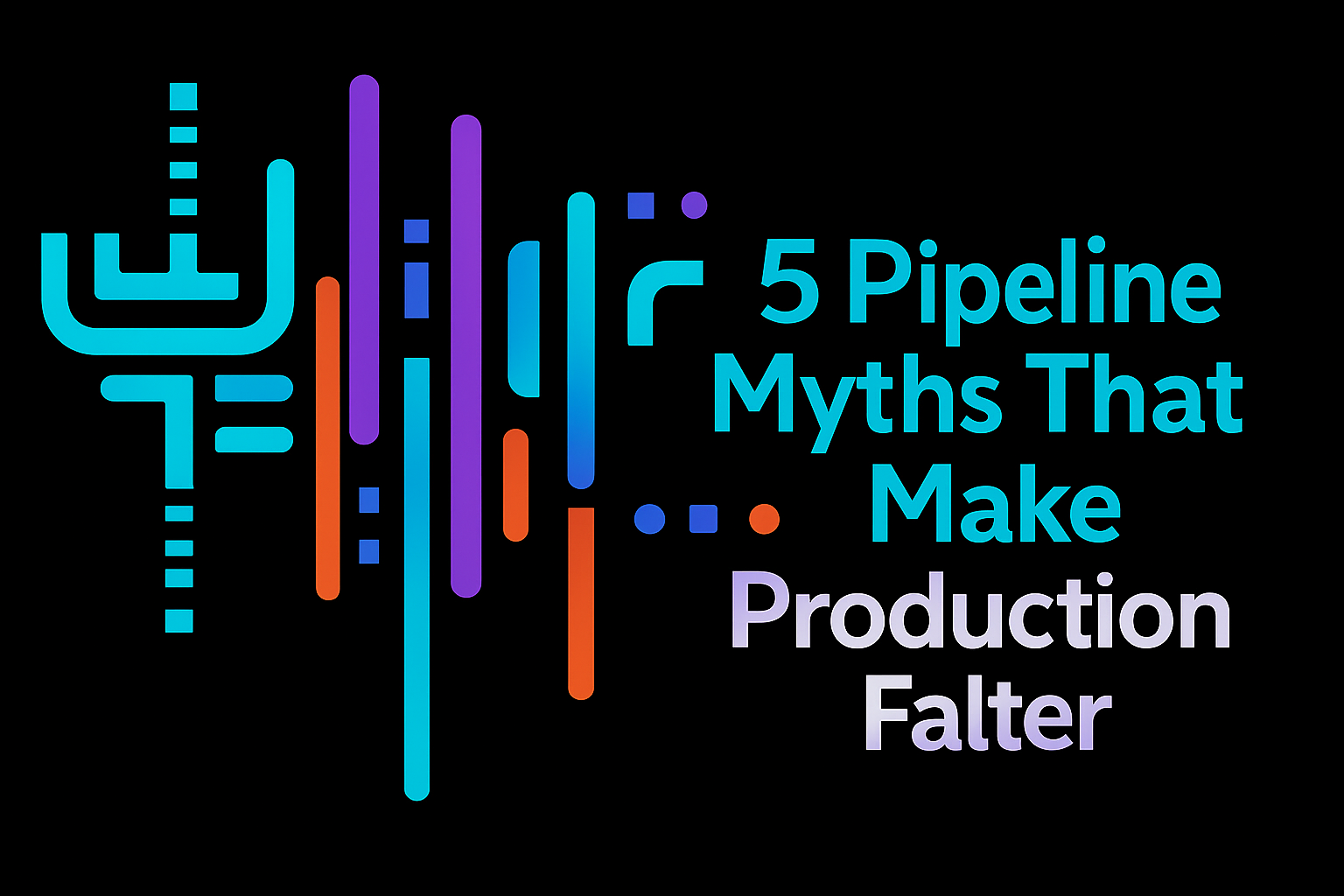No studio has a perfect pipeline — not even the ones that look like they do from the outside.
Over my years in animation, I’ve seen how much of a project’s success comes down to the clarity, flexibility, and culture of its pipeline — not just the tools or timelines. And yet, certain myths keep popping up again and again — especially when things are moving fast, deadlines are tight, or people are trying to simplify something that’s inherently messy.
Let’s bust a few of the most common ones.
1. “We’ll Figure Out Pipeline Later”
This is probably the most common lie we tell ourselves — and the most costly.
Every studio I’ve ever worked with has, at some point, fallen into the trap of building systems reactively. You start out with good intentions, but tight deadlines, sudden pivots, and trial-by-fire workflows always creep in. You patch a need here, slap on a workaround there, and before you know it, you’re duct-taping a dozen tools together and calling it a pipeline.
Here’s the thing: you can’t fully avoid this. But you can build for it. The goal isn’t to create a perfect system upfront — it’s to design one that can handle change when it inevitably comes.
That means thinking modularly, designing for different kinds of projects (not just the current one), and prioritizing cross-departmental awareness. The best pipelines are built not just for what’s needed today, but for what’s likely to go wrong tomorrow.
2. “Artists Don’t Need to Know the Schedule”
A good pipeline should protect artists from chaos — not shut them out of the system entirely.
I’ve seen what happens when artists are left in the dark about review expectations, deadlines, or shifting priorities. They either work on the wrong thing, or end up blindsided when someone suddenly asks them for final delivery on something they didn’t even know was due. It’s disrespectful to their time, and it puts unnecessary stress on everyone involved.
At the same time, you don’t want to overwhelm artists with admin work. That’s why production exists — to absorb the overhead and keep things moving. The trick is to build systems that provide the right level of information at the right time. Artists should clearly understand:
- What’s expected of them
- When reviews are happening
- How to flag problems or delays early
The rest — statuses, dependencies, approvals — should be handled by a well-tuned system and a responsive production team.
3. “This Tool Will Solve Everything”
Tools are powerful — but they’re not magic.
I started this blog because I kept seeing studios treat software like a silver bullet. “Just get ShotGrid!” “Set up FTrack!” “Perforce!” “Jira!” But no matter how good a tool is, it doesn’t solve anything if the people using it don’t understand how it works — or why it’s set up the way it is.
When people treat a tool like a magic fix, they get frustrated fast. “ShotGrid is so complicated,” they say. “It’s a bad tool.” But in most cases, the issue isn’t the tool — it’s the lack of understanding around it and an improper setup. Tools don’t fix broken systems or bad communication. They just expose them.
A tool is only as good as the pipeline thinking behind it. And without that thinking — that understanding — it’s just a shiny user interface with a lot of buttons no one knows how to use.
4. “Production Is Just Admin Work”
This one’s personal.
I’ve spent years in both creative and production roles, and I can say with full confidence: production is deeply creative work. Good producers and pipeline leads are constantly solving complex problems, anticipating roadblocks, and navigating the messy intersection between artists, managers, and stakeholders — each with totally different goals and priorities.
Yes, there’s admin work. But the real value of production is in its ability to make the creative process smoother, clearer, and more human. That includes:
- Foresight — catching issues before they explode
- Empathy — understanding what artists need to do their best work
- Translation — turning vague goals into actionable steps
- Agility — adapting when (not if) things go sideways
When production is working well, it feels invisible. But behind the scenes, they’re the glue keeping everything together — solving a thousand problems you never even hear about.
5. “If We’re Busy, It Must Be Working”
Nope.
Just because your team is slammed doesn’t mean your pipeline is healthy. In fact, it often means the opposite. I’ve seen production teams grind for hours doing tasks that should take minutes — manually entering notes, chasing approvals, emailing status updates, copying data between systems.
A good pipeline reduces that load. It automates the repetitive stuff, surfaces issues early, and lets people spend their energy on the decisions that matter. When things are working, you’ll notice fewer frantic emails. Less rework. More clarity.
A healthy pipeline often looks quiet. But that’s not laziness — that’s flow.
Conclusion
None of this is about building a perfect pipeline. That doesn’t exist. But if we can move past the myths — and start having real conversations about how we work — we can build systems that actually support the people inside them.
Got a favorite myth you’ve heard before? Drop me a line or shoot me a comment — I’m collecting them.

